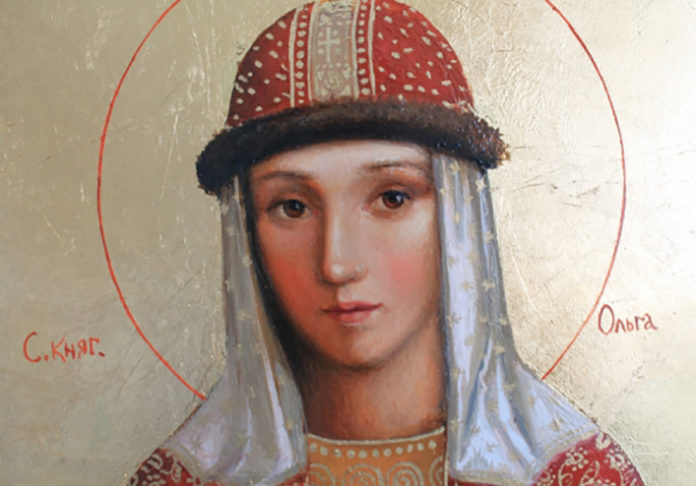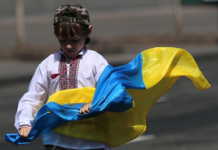Princess Olha’s origin and chronology remain a mystery. Historians are only sure of the date of her death, recorded in ancient church chronicles. Several versions of her ancestry have been put forth by different scholars: Bulgarian, Varyngian, Kyiv, Halychyna, Pskov, Tmutarakan and others, but none of them have been historically confirmed.
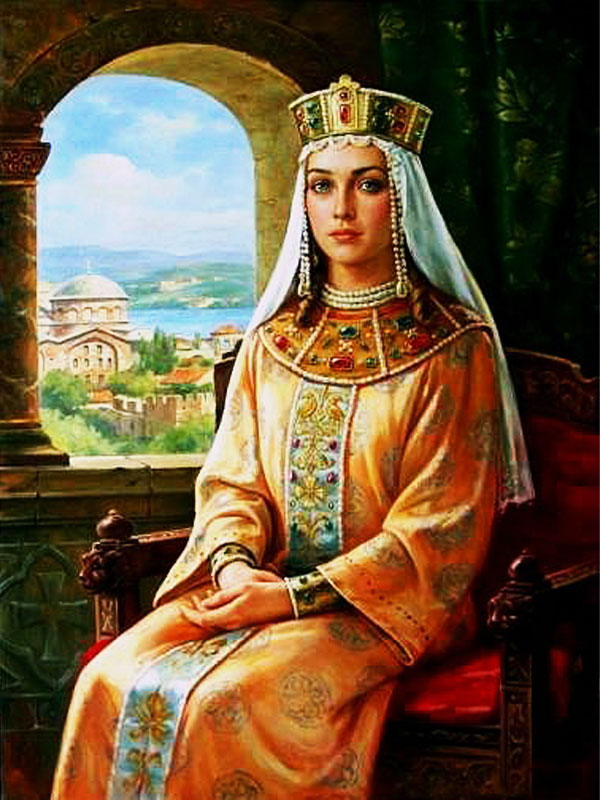

In the “Tale of Bygone Years” (Primary Chronicles), chroniclers write that a woman named Olha was brought from Pskov in 903 to be married to Ihor, son of Rurik (first ruler of Kyivan Rus-Ed.). She must have been about 14 years old at that time, so it allows scholars to suppose that Princess Olha was born somewhere between 889 and 891 years. Olha and Ihor lived together for 33 years, and when their son Svyatoslav was born, she was approximately 36 years old.
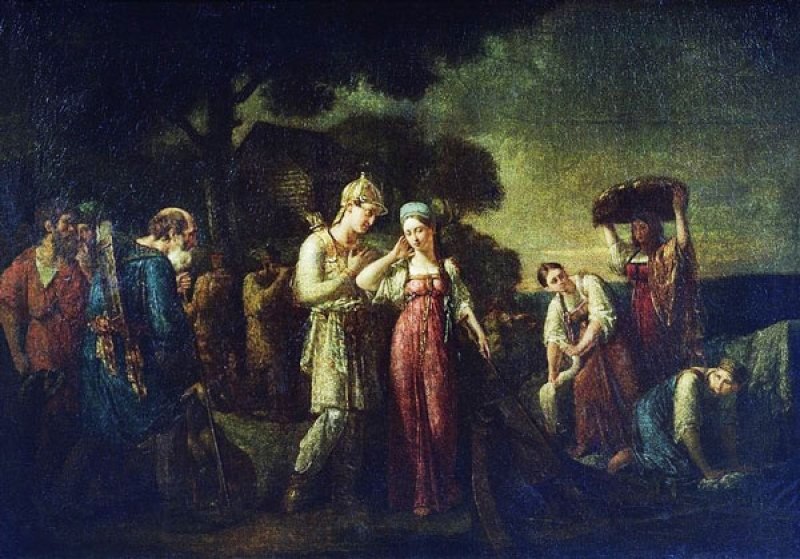

In the last years of Ihor’s reign, Kyivan Rus was engaged in a war against the Drevlians[Early East Slavs between 6th and 10th century, which inhabited the territories of Polissia and right-bank Ukraine-Ed.], a tribe that refused to pay tribute to the Grand Prince of Kyiv. According to chronicles, the Drevlians massacred Prince Ihor and his troops near the city of Iskorosten [modern Korosten in Ukraine] in 945. The Byzantine chronicler of the second half of the 19th century, Leo the Deacon outlined a detailed picture of this terrible massacre. He described that Prince Ihor was tied to the branches of two bent birch trees, and when they were released, his body was torn apart… [In 945-946, Ihor’s widow Olha avenged her husband’s death in an extremely harsh manner, killing Drevlian ambassadors and nobility, burning their capital of Iskorosten to the ground and leveling other towns. After having subjugated the Drevlians, Olha transformed their territories into a Kyivan appanage with the center in Vruchiy-Ed.]
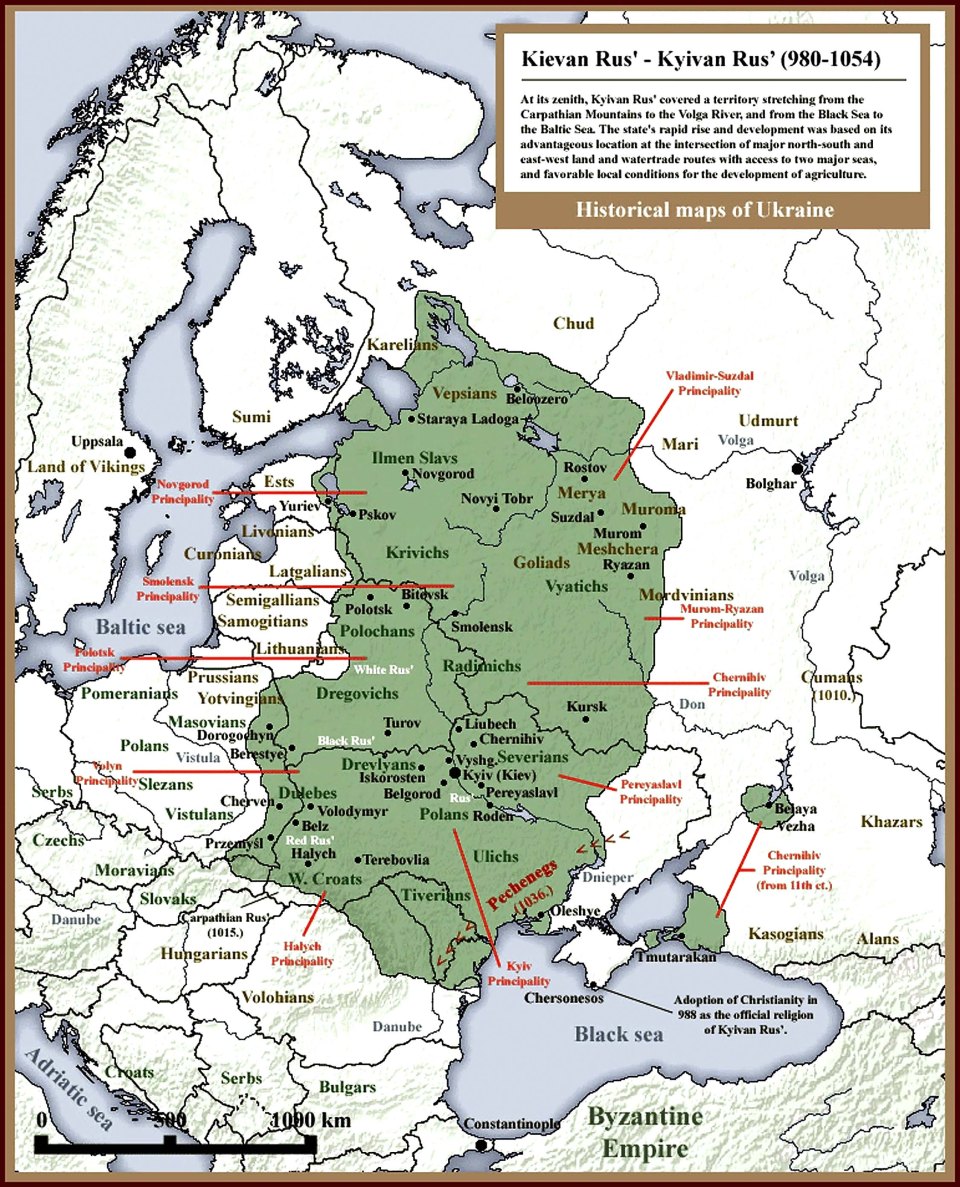

Olha was left to reign as regent with her young son Svyatoslav. The reign of Grand Princess Olha of Kyiv marks a decisive turn in the history of Kyivan Rus.
After subjugating the Drevlians, Princess Olha did not engage in further wars like her husband Ihor and ancestor Oleh, but devoted her time to internal affairs of the state. She visited the entire kingdom, from the Desna River to Pskov and Novhorod.
Princess Olga first set to cleaning up the tribute system: she established certain norms for taxes and brought in new terminology and practices, such as “устави, уроки, дані” (statutes, classes, data) that were recorded by chroniclers. Tribute collected from the Drevlians and other tribes was divided into three parts: two went to Kyiv, and the third – to Vyshhorod, where Olha had her residence.
In 957, Princess Olga visited Constantinople, where she signed an agreement with the Byzantine emperor Constantine VII Porphyrogenitus. It was during this royal visit that she adopted Christianity in the night of October17 to 18, 957. Ancient Rus chronicles write that as soon as Olha returned to Kyiv, she began to demolish pagan temples. However, she was not able to impose Christianity throughout the kingdom.
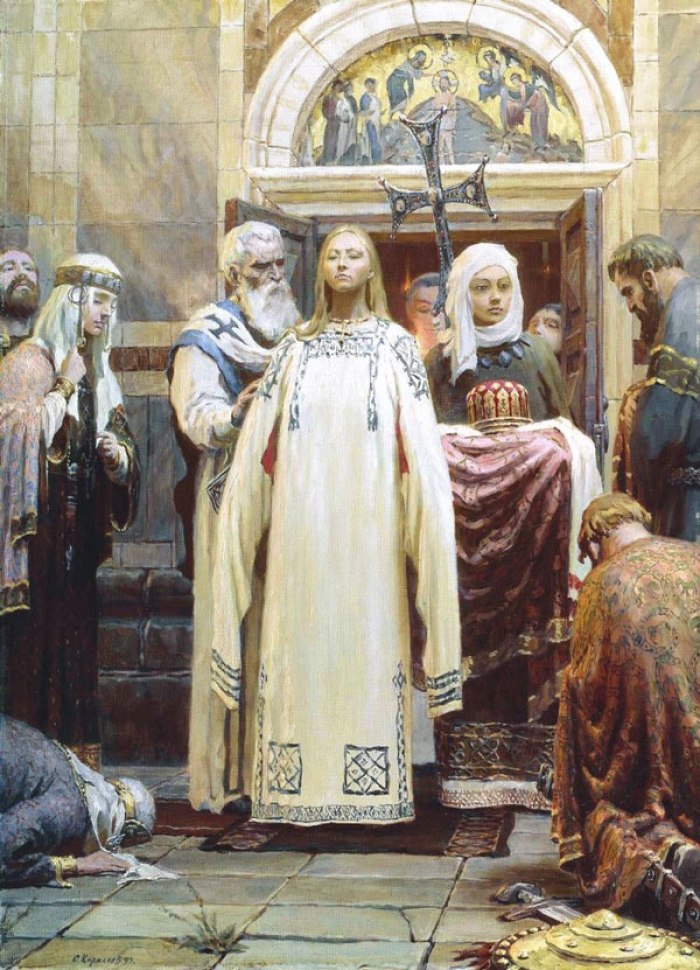

Princess Olha introduced laws for industrial hunting of fur-bearing animals and specified which areas were to provide fur to the state treasury. Subordinated tribes also gave fur as tribute to the central state, and was in great demand in other European countries.
Grand Princess Olha of Kyiv was also renowned for building many important edifices. The Joachim Chronicles mention the construction of the wooden church of St. Sofia in the Kyiv Acropolis. The “Tale of Bygone Years” also refers to the great Kyiv Palace of Princess Olha.
Princess Olha died in July, 969. Prince Svyatoslav buried his mother according to Christian tradition in the Church of St. Nicholas near Askold’s grave.
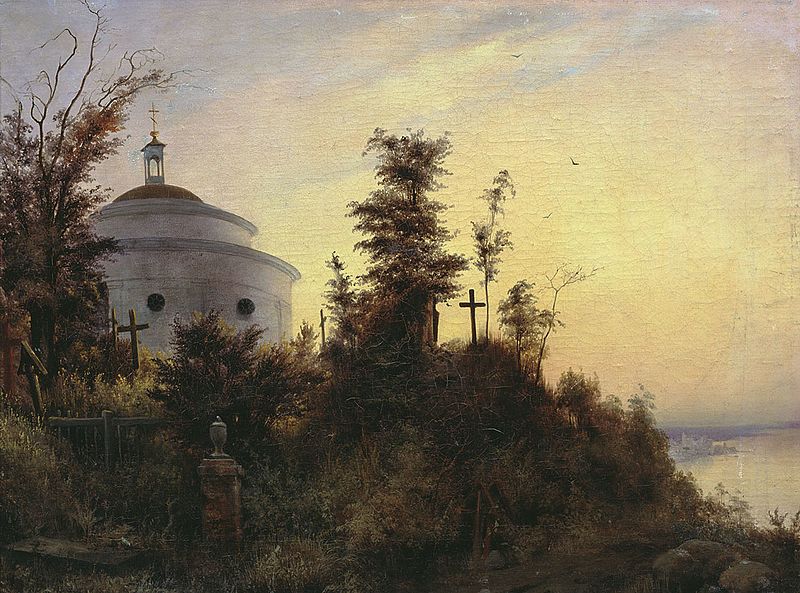

Her grandson, Volodymyr the Great [Christianization of Kyivan Rus in 988-Ed.] transferred her remains to the Desyatynna Church of the Assumption of the Virgin in Kyiv. During the Mongol invasion of Rus in the 13th century, Olha’s relics were hidden under the ruins of the church. When Metropolitan Petro Mohyla started building a small church on the site of the ancient Desyatynna Church in 1635, he discovered her relics, which he left in place; they were preserved there until the 18th century. They were then reburied by order of the Moscow Synod, but no one knows exactly where.
Grand Princess Olha of Kyiv was a wise, strong, and charismatic ruler, and her story marks one of the golden pages of our long history.
Translated by: Christine Chraibi
Edited by: A. N.
Source: Vsviti
Source: euromaidanpress.com






















